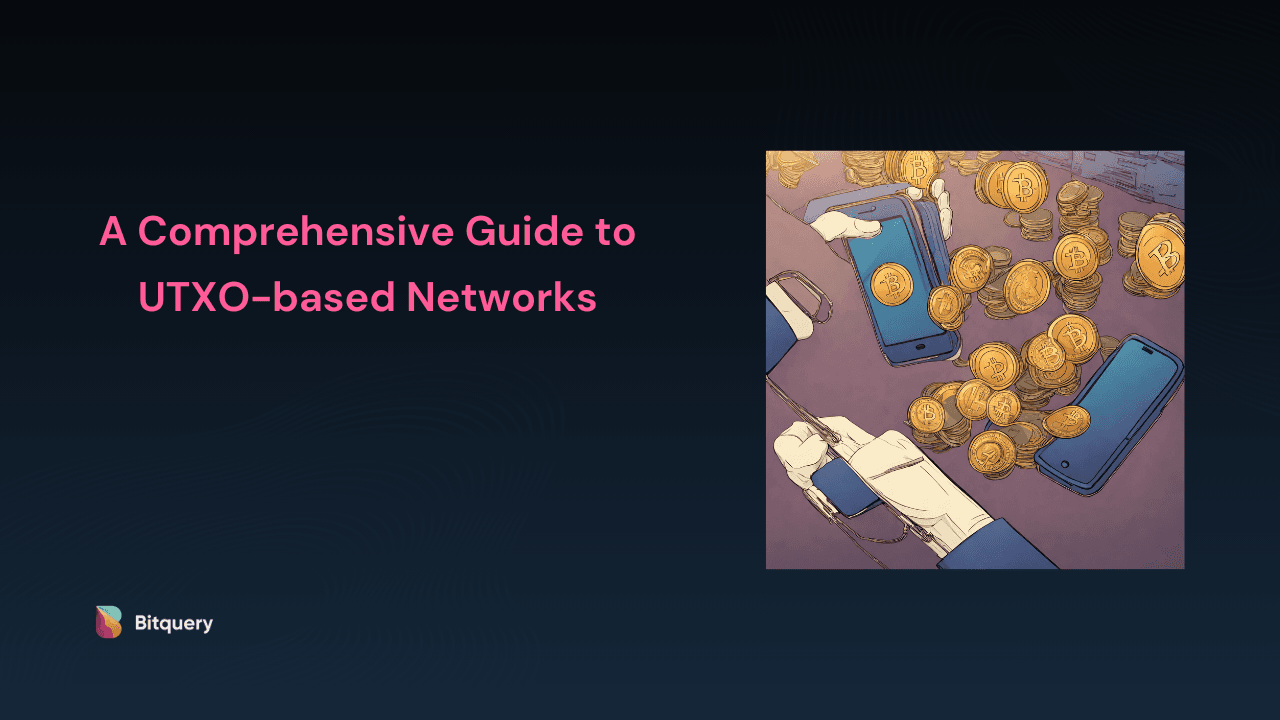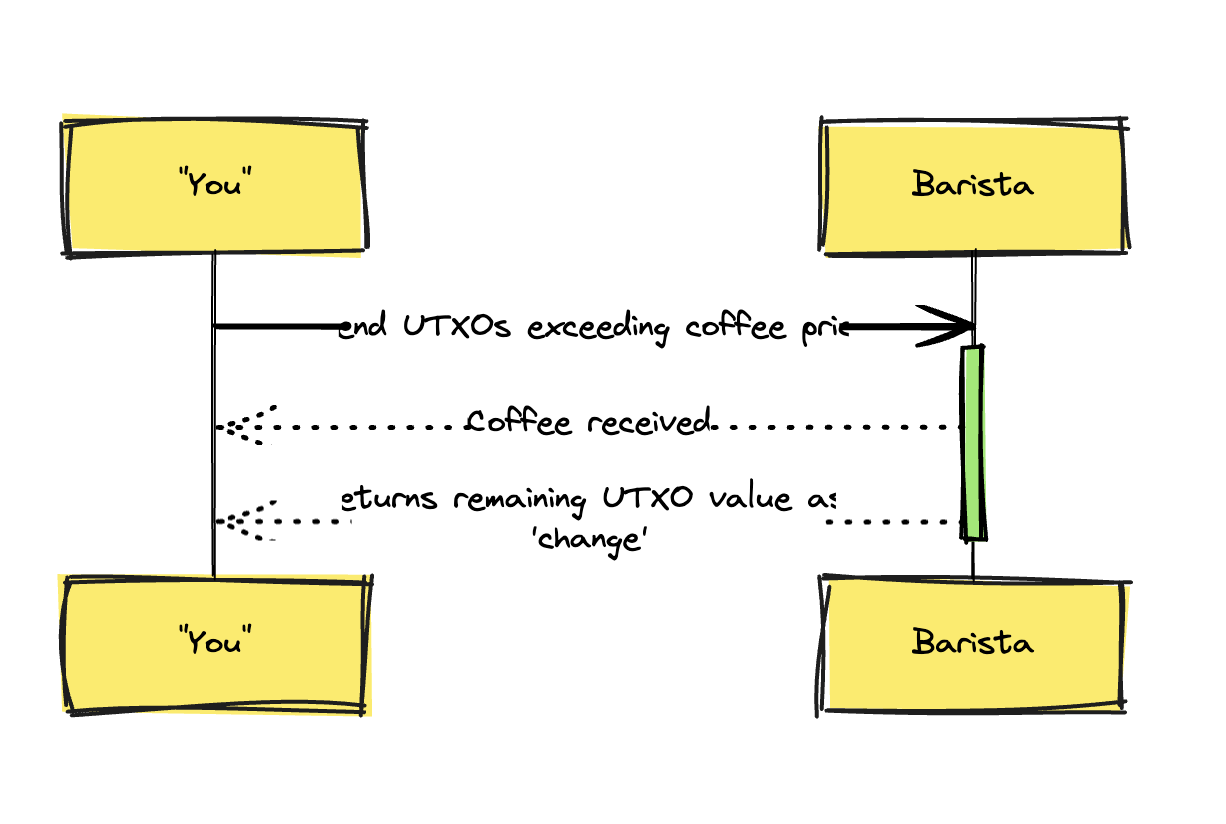
A Comprehensive Guide to UTXO-based Networks
UTXOs (Unspent Transaction Outputs) represent unspent portions of digital currency on a blockchain, like coins within a digital wallet. Tracking them is crucial for understanding financial flows and blockchain network activity.
Think of UTXOs as digital coins, each representing a specific amount of cryptocurrency. These coins are created when you receive crypto and remain "unspent" until you use them again. Each coin has a unique identifier and is linked to your public key, ensuring only you can spend it.
In this blog, we'll discuss UTXOs (Unspent Transaction Outputs) and explore their significance in understanding financial flows and blockchain network activity. We'll cover various aspects, including how UTXOs function, their strengths and disadvantages, popular UTXO-based blockchains, accessing UTXO data, analyzing UTXO distribution and transaction patterns, and exploring the future of UTXO-based networks.
Spending and Receiving UTXOs:
Imagine paying for coffee with UTXOs:
- Spending: You send the barista several UTXOs with a total value exceeding the coffee's price. This is your transaction's input.
- Change: The barista receives the coffee's worth and returns any remaining UTXO value (your "change") as new UTXOs, now owned by you. These are your transaction's outputs.

This way, each transaction uses existing UTXOs and creates new ones, keeping track of ownership changes without "double-spending" the same coin twice.
Each UTXO has a unique ID and is linked to your public key, ensuring only you can use it. They track who owns what in the crypto world, similar to physical coins but digitally and more complex. Transactions use existing UTXOs and create new ones, preventing "double-spending" the same coin twice.
Strengths of UTXO-based networks:
- Privacy: Individual UTXOs provide more granular control and anonymity compared to account-based models. Using different addresses for each transaction makes it harder to track your activity, offering enhanced privacy compared to account-based models.
- Scalability: Transactions can be processed independently, making networks like Bitcoin faster and more scalable, especially during high demand.
- Security: The UTXO model inherently prevents double-spending.
- Simplicity: The model is relatively easy to understand and implement.
Disadvantages of UTXO:
- Less user-friendly: Transactions can be more complex with multiple UTXOs involved, compared to the simpler account-based system.
- Limited programmability: Standard UTXOs don't support complex smart contracts, although newer variations like Nervos' "cell model" aim to address this.
- Scalability: While improvements are being made, achieving mass adoption requires efficient on-chain and off-chain solutions.
Popular UTXO Blockchains:
- Bitcoin: The OG cryptocurrency, built on the UTXO model, prioritizing security and decentralization.
- Litecoin: Designed to be faster and cheaper than Bitcoin, leveraging the UTXO model for similar benefits.
Accessing UTXO using Bitquey for a Bitcoin Transaction

In Bitcoin and other UTXO-based blockchains, every transaction involves unspent transaction outputs (UTXOs). Let's break down the process using the example, Bitcoin Mainnet transaction 3020676ba29d2fee01e4666a5f5071f6a917b8b5922f4520c788d5d082615c92:
-
Initial State: You have a UTXO containing 0.0082 BTC. Think of this as a digital coin with that specific value and a unique identifier.
-
Transaction Creation: You initiate a transaction to send 0.0050 BTC to another recipient.
-
UTXO Consumption: To spend the 0.0082 BTC UTXO, you "consume" it as an input to the transaction. This UTXO is no longer considered unspent.
-
Output Creation: The transaction generates two new UTXOs:
-
Payment Output: This UTXO holds the exact amount sent to the recipient (0.0050 BTC).
-
Change Output: This UTXO represents the remaining balance from the original UTXO (0.0032 BTC). It is essentially "change" returned to you, similar to using a physical bill and receiving smaller denominations in return

Querying UTXO data for specific Bitcoin Transaction
query MyQuery {
bitcoin(network: bitcoin) {
inputs(date: {is: "2022-02-02"}) {
count(height: {is: 721435})
value(calculate: sum)
}
outputs(date: {is: "2022-02-02"}) {
count(height: {is: 721435})
value(calculate: sum)
}
}
}
Output:
{
"bitcoin": {
"inputs": [
{
"count": 6334,
"value": 3335091.3185786
}
],
"outputs": [
{
"count": 7931,
"value": 3335079.0414781
}
]
}
}
What's happening here:
The query essentially asks for transaction activity details at a specific point in time (February 2nd, 2022) on a specific block within the Bitcoin blockchain (height 721435). It retrieves both input and output data, providing:
- Number of transactions: Counts the total number of transactions (inputs and outputs) that occurred at that block height and date.
- Total value: Calculates the combined value of all Bitcoin involved in those transactions (both spent as inputs and received as outputs).
This information can be useful for various purposes, such as:
- Analyzing historical network activity: Studying transaction volume and value at specific points in time can provide insights into Bitcoin usage trends and economic activity.
- Investigating specific events: If you have a particular date or block height in mind related to a known event (e.g., a major price movement), this query can help you understand the on-chain transaction activity associated with it.
- Building applications: Data retrieved through this query could be used as input for various applications, such as charting tools, analytics dashboards, or research projects.
Analyzing UTXOs provides several possibilities beyond the information directly retrieved in your query. Here are some potential insights you can gain:
UTXO distribution and size:
- You can analyze the distribution of UTXO sizes to understand the concentration of wealth and spending habits on the network. For example, are there many small UTXOs, indicating frequent microtransactions, or are there fewer large UTXOs, suggesting holding behavior?
- You can identify the largest UTXOs and explore their history or potential ownership, although privacy considerations come into play here.
Transaction patterns:
- By delving deeper into individual transactions, you can identify patterns of UTXO spending and creation. Look for trends in the number of inputs and outputs per transaction, their sizes, and potential clustering (e.g., if multiple transactions appear related).
- This can reveal insights into spending behavior, and mixing techniques, and potentially identify exchanges or other services based on their characteristic transaction patterns.
Popular UTXO-based Projects
While Bitcoin may be the grandfather of UTXO-based blockchains, a vibrant ecosystem of other projects leverages this model with unique twists and exciting applications. Let's dive into three noteworthy examples:
-
Litecoin (LTC): Nicknamed "silver to Bitcoin's gold," Litecoin was created in 2011 with the aim of faster and cheaper transactions compared to its predecessor. Think of it as Bitcoin's faster, cheaper cousin. It uses UTXOs just like Bitcoin, but with bigger blocks and faster processing, making transactions zippier. It's like using quarters instead of dollars – smaller units for quicker spending.
-
Zcash: Zcash's UTXO-based privacy sets it apart, attracting users who value anonymity and transaction confidentiality. While it might be a bit more complex than its UTXO counterparts, understanding how it works allows you to appreciate its unique contribution to the cryptocurrency landscape. Imagine UTXOs as regular coins, but some wear special black masks that hide their value and sender/receiver information. These are "shielded" UTXOs, the cornerstone of Zcash's privacy magic. Transactions involving them utilize advanced cryptography (zk-SNARKs) to prove their validity without revealing any details. It's like showing someone you paid your bill without revealing the amount or your identity
-
Dogecoin (DOGE): The internet's favorite Shiba Inu-faced cryptocurrency, might seem like all fun and memes, but under the hood, it operates using the same UTXO-based system as Bitcoin! But what exactly does that mean? When you spend DOGE, you're not sending a chunk of your balance; you're handing over specific UTXOs (Unspent Transaction Outputs) like physical coins. These UTXOs are used up in the transaction, and new ones are created as "change" or sent to the recipient. This system keeps track of ownership transparently and prevents double-spending (using the same coin twice).
These are just a few examples among the diverse landscape of UTXO-based projects. Each offers unique features and approaches, showcasing the potential of this model beyond its initial use case in Bitcoin. As development continues, UTXO-based networks have the potential to play a significant role in decentralized finance (DeFi), non-fungible tokens (NFTs), and other emerging blockchain applications.
Future of UTXO-based networks
UTXO (Unspent Transaction Output) is a way of keeping track of "coins" on blockchains like Bitcoin. Instead of accounts with balances, each coin is tracked individually. Now, let's dive into some cool things happening in the UTXO space:
- Enhanced Scalability and Efficiency:
- Schnorr Signatures and Taproot: These cryptographic advancements are being implemented in Bitcoin and other UTXO blockchains. They improve transaction efficiency and privacy by reducing transaction size and enabling complex spending conditions without revealing them publicly.
- UTXO Commitment Aggregation (UTXO-CA): This is a scalability solution being explored by Cardano. It allows for aggregating multiple UTXOs into a single, smaller unit, reducing storage requirements and improving transaction speeds.
- Smart Contracts and DeFi on UTXO:
- Cardano's Plutus and Marlowe: These smart contract languages are designed specifically for the UTXO model, allowing for secure and scalable smart contract development.
- RSK Infrastructure Framework (RIF): This platform provides bridges between Bitcoin and Ethereum, enabling developers to leverage the security of Bitcoin with the flexibility of Ethereum's smart contract functionalities.
- Stacks: This protocol allows developers to build smart contracts and decentralized applications (dApps) on top of Bitcoin without modifying the original blockchain.
- Interoperability and Cross-chain Solutions:
- Cosmos Inter-Blockchain Communication (IBC): This protocol enables communication between different blockchains, including UTXO and account-based systems. This allows for the transfer of assets and data across different chains.
- Chainlink oracles: These decentralized oracles are being integrated with UTXO-based blockchains to allow smart contracts to access off-chain data and trigger actions based on real-world events.
- Privacy-focused Projects:
- Monero RingCT: This privacy technology is constantly evolving to enhance transaction anonymity on the Monero blockchain.
- Grin: This privacy-focused UTXO-based blockchain uses Mimblewimble, a technology that allows for compact and confidential transactions.
- Emerging Applications:
- Supply Chain Management: UTXO's inherent traceability makes it suitable for tracking the movement of goods and materials through supply chains, ensuring transparency and security.
- Identity Management: Secure storage and management of digital identities can be achieved using UTXO, offering individuals greater control over their personal data.
These are just a few examples of the exciting developments happening in the UTXO space. As the blockchain space matures and new projects emerge, we can expect to see further advancements in scalability, smart contracts, interoperability, privacy, and a wider range of applications built on UTXO-based blockchains.
Blog written by Pratik
Subscribe to our newsletter
Subscribe and never miss any updates related to our APIs, new developments & latest news etc. Our newsletter is sent once a week on Monday.


